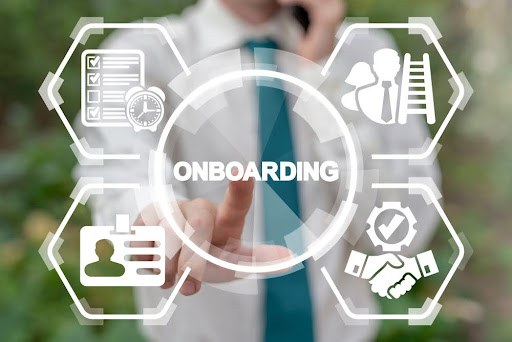Customer onboarding may be the first point of contact for a business with a new customer. It is the time needed to create a first impression of value creation with the right expectations being set. So, through a good onboarding process, the customer understands what they sign up for. This builds trust in the firm and increases competence. All this assures a business that it has at its disposal all the information necessary to ensure compliance with the law.
With respect to the smooth onboarding of new customers, there are some basic things that every business should focus on. Abiding by the best onboarding practices makes the process seamless for customers while protecting the company.
The article is going to discuss seven essential things to keep collected, like educating customers on the offerings and the rest of the information.
Make the Onboarding Process Easy and Intuitive
The customer onboarding process must be simple and easy to understand. 70% of Customers say confusing forms and processes spoil the customer experience. Customer onboarding software makes the process intuitive with the fewest clicks and pages. Features like progress tracking, conditional questioning, and auto-fill reduce drop-offs. Bank of America cut abandonment rates by 50% by simplifying their mobile customer onboarding process.
Collect the Right Customer Data
This makes the onboarding experience for a customer very great by collecting only essential information to open an account. Too much irrelevant data can be annoying to clients, and 20% may abandon the process. At the same time, onboarding without verification of identity and address involves more risks. Good customer onboarding software for banks allows them to collect only key fields for KYC and AML checks in an optimized flow, which is optimized to allow them to conduct 80% personal and 60% business customer onboarding in banking entirely online.
Send Timely Welcome Emails
It is necessary to send a follow-up thank-you email after onboarding. A welcome email sent an hour after signing up can have a more significant impact on the client’s onboarding experience. On average, it is reported that such emails are opened at a 35% higher rate than the company’s standard marketing emails. Such emails serve to repeat the company’s service and teach trust in their client onboarding process.
AIG Insurance reported that there was a 12% increase in renewal rates after they sent personalized welcome emails to their clients. The company included the next steps in a checklist, contact information, and a small survey. Mails should be triggered in the customer onboarding system, depending on the filled-up forms, so that the customer gets the mail by the very next hour.
Provide Helpful Onboarding Documentation
Along with emails, helpful guides facilitate smooth onboarding. A client onboarding checklist guides new customers in understanding the process and what’s expected. Surveys show over 70% want a manual that talks about procedures. The paperwork that Danske Bank handed the new customer reduced support queries by 25% within the first month.
Write comprehensive but simple documentation to save them from onboarding uncertainties. Onboarding software helps provide tailored PDF guides. These should include processes, team contacts, and compliance topics like KYC and AML in banking. Documentation helps to solidify the client’s experience and compliance.
Launch Post-Onboarding Surveys
Getting feedback on whether or not onboarding was done helps to improve the process. Surveys show that 65% of new clients are willing to provide reviews. American Express sends a 5-question survey immediately on onboarding customers. This identified their weakest steps and led to an 8% increase in referrals after upgrading.
Respondents can be given incentive submissions through reward points to be added to their loyalty accounts. The key is reviewing responses to enhance the customer onboarding checklist and identify areas like documentation that need clarity. Acquiring this data better prepares companies for onboarding 90% of future clients entirely digitally.
Nurture the New Customer Relationship
Onboarding is only the start and ongoing engagement bolsters retention rates. Clients who receive post-onboarding support are 18% more likely to remain long-term. Businesses must follow up via email or phone to address any other questions within a week of onboarding customers. Simple check-in messages verify account access and seek early feedback. This builds confidence during the initial use of products or services. Plus, it allows for the coverage of additional topics that cannot be addressed during business onboarding due to time constraints. Nurturing new clients eases them into using your complete offering to maximize the value of the onboarding process.
Track and Measure Onboarding Success
Companies that monitor onboarding metrics see a 25% higher customer retention rate. You should follow post-onboarding engagement and usage metrics like activation rates, usage after three months, satisfaction scores, and renewal rates. American Express uses an onboarding tracker and has been able to increase completeness by 20%. Run on an ongoing basis so you can track any drops in the success rate and make tweaks. This fine-tunes your process.
